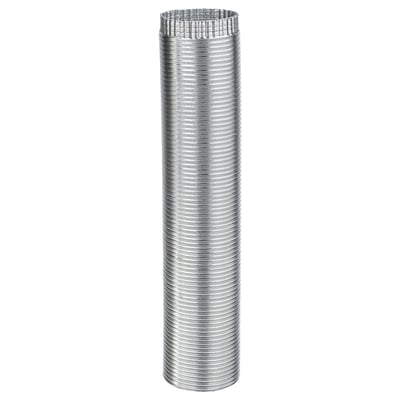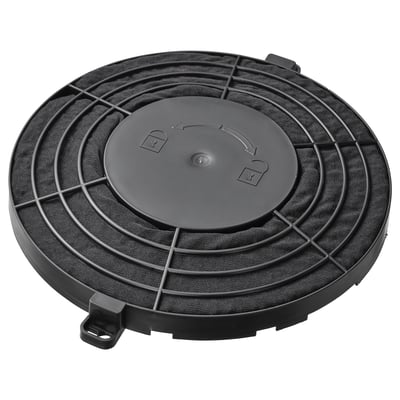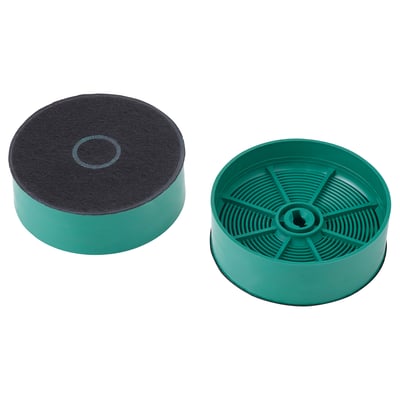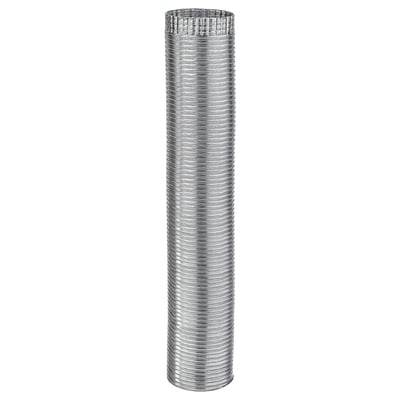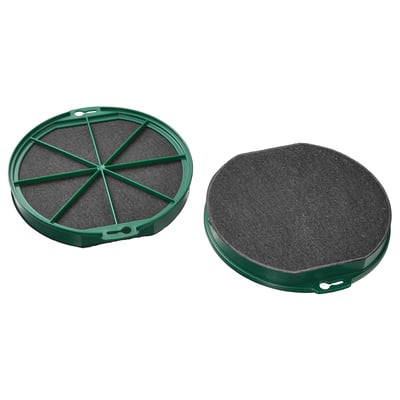Extractor hoods & filters
Book your dream kitchen
Let Your Cooking Enjoy The Limelight While You Enjoy Fresh Air
Enjoy the delicious aromas of cooking while ensuring that it does not go past the stove area. Efficient extractor hoods & filters keep the kitchen atmosphere fresh and clean. Our extractor hoods give you the dual benefit of clean air and good light. The HARMONISK extractor hood pairs good looks and a powerful extractor motor. And the glass and steel finished exterior with slightly rounded linear lines is a beautiful addition to any kitchen. The LUFTIG extractor hood has a chimney shaped design with excellent extractor and lighting features.
Recently viewed
Clean fresh air in your kitchen regardless of what you cook
Chimneys to let you enjoy the freedom of getting creative in your kitchen. These kitchen chimneys ensure that your cooking environment remains ventilated, while leaving your kitchen smelling fresh after your master chef session.
In our selection of cooker hoods, you'll find many different styles and designs. Read on to get some quick tips on how to choose the right cooker hood for your kitchen.
With our models, you don’t have to worry about waging a battle on the cooking smells keeping your kitchen hot and stuffy. Our extraction hoods come equipped with powerful ventilation systems that free the cooking area from both smoke and steam. With an ANAPASSA or HARMONISK extractor hood, cooking can be a delightful experience. On top of that, elegant designs add to the aesthetic value of your kitchens, making you feel like a true master chef!
Which cooker hood should I choose?
Cooker hoods come in wall-mounted, ceiling-mounted, and built-in varieties. Which one to choose depends on the layout of your kitchen and which style you prefer.
Wall-mounted cooker hoods
A wall-mounted cooker hood is perfect if you have your stove placed somewhere along the kitchen wall.
Aside from ventilating, the extractor hood will also be an important part of your kitchen interior. A model with curved glass creates a light and airy impression. A model with clean and straight lines is perfect for a modern and minimalistic kitchen. A model with a more soft and round design will be perfect if you have a more traditional taste.
Built-in cooker hoods
With a built-in cooker hood, you'll get a neat and tidy kitchen environment. The cooker hood will be placed behind a cupboard or cabinet kitchen doors as an integrated part of your kitchen environment. Choose cabinet doors that match the rest of your kitchen and create a seamless, uniform look.
Extractor hoods for kitchen islands
Are you planning to create a kitchen island? With a kitchen island, you'll get a new dynamic in the kitchen by placing the cooking activities more in the centre of the room. For this kind of layout, we recommend one of our ceiling-mounted cooker hoods. Another option is FÖRDELAKTIG - an induction hob with a built-in extractor hood.
If you're looking to complement your new extractor hood with an induction hob, you'll find our selection of induction hobs here.
What extraction rate do I need?
If your cooker hood doesn't have a high enough extraction rate for the size of your kitchen, it will take much longer to clear the cooking smell. We therefore recommend you choose a cooker hood with an extraction rate that will filter the air in your kitchen around 10 times per hour.
How much air the cooker hood processes per hour is defined with m³/h. To get an indication, start by working out the volume of your kitchen (length x width x height). Then divide the extraction rate with the volume of your kitchen. The result will show how many times per hour the cooker hood will be able to filter the air in your kitchen.
Are kitchen Chimney's long-lasting?
Now that you have installed a chimney for your stove, the next question that you may ask is - How long will this filter work? Unlike most home appliances that require some fixing after a while, cooking hood filters simply need to be cleaned or replaced after a few months. For lovers of fried food and cooking in general, the condition of range hoods might need to be checked more often. Grease and smoke lodged in the filter can reduce its utility over time. With an IKEA kitchen hood, cleaning is a very simple process and requires no expertise at all. It’s as simple as washing a utensil with soap and water to remove the stains. Ta-da!
Cleaning and maintaining your cooker hood
The method and frequency of cleaning and maintaining your cooker hood will be specified in the manufacturer’s manual. You must respect these instructions and change or clean the filters as specified for your hood to keep it working efficiently. The exterior of most cooker hoods can be cleaned with a damp cloth and a mild detergent.
Charcoal filters
What makes an IKEA charcoal filter really durable? It’s all about the material that it’s made of.A charcoal filter, if used in your hood model cannot be washed or regenerated. It offers no scope for removal of food particles and waste. A charcoal filter must be replaced after every four months of usage and more frequently if the usage has been heavy. With this filter, you can avoid the general hassle of washing and cleaning.
Grease filters
Grease filters must be cleaned regularly to avoid grease buildup which is a potential fire hazard. Grease filters can be washed in a dishwasher and must be cleaned every two months of operation and more frequently if usage has been heavy. You should be careful to support the filter with your hand before removing it. Filters made of stainless steel or mesh have physical characteristics suitable for regular washing and drying. It is a relatively sustainable option for range hoods as you can reuse the filter.
The difference between ducting and recirculation mode
Cooker hoods that are connected to a duct that allows them to move air out of the kitchen are called ducted hoods. They need to be connected to a pipe or duct that carries the air outdoors. Ducted hoods are usually installed on a wall that has a duct.
Ductless hoods work on a recirculation mode that does not extract the air from the kitchen to the outside. Ductless hoods filter and recirculate the same kitchen air after filtration. Ductless hoods often use an activated carbon or charcoal filter that removes odours and smoke from the air before recirculating it. It is important to replace this filter as per the manufacturer’s recommendations to get the best performance out of a recirculating ductless cooker hood. A chimney that can be installed in either ducting or recirculation mode is called a convertible chimney.
The correct height for cooker hood installation
A cooker hood should be installed at an optimum height to adequately suck in the fumes from the pans on your cooktop. But they should not be so close that the cooker hood and the hob interfere with each other’s functioning. Cooker hood manufacturers specify the height at which their hoods should be installed. The minimum height for a cooker hood installation is usually 700mm above a gas hob and 500mm above an electric hob. Hob manufacturers also specify the height above which a chimney can be installed. The user should study the manuals of both the cooker hood and the hob to determine the optimal installation height. The naked flame of a cooktop should never reach the cooker hood.
Chimney noise levels
It is important to choose a chimney or cooker hood that makes minimal noise. A quieter cooker hood ensures that your time at the stove is peaceful. The lower the dB rating of the cooker hood the quieter it is.
Cooker hood test
To check if your cooker hood is working just hold a banknote or piece of paper close to the cooker hood intake and see if it is pulled towards the hood. Hold the note securely and be careful not to do this when cooking or when the hob is in use.
Benefits of a cooker hood
A cooker hood removes the excess moisture, cooking smells, and smokes if any from the kitchen atmosphere. It keeps the air fresh and clean and also prevents mould from growing in the kitchen due to excessive moisture in the air.
Why should I install an electric chimney?
Buying modern house equipment is not an extravagance, but an investment. Kitchen chimneys protect walls and ceiling from smoke damage. They improve the life and aura of your kitchen.
Comfort is an overlooked ingredient when it comes to cooking. A well-lit and spacious kitchen is much needed for that. Our stylish designs, including the LUFTIG Extractor Hood, can brighten any home chef’s mood and create a wonderful cooking experience.
Improves air quality
Cooking in a smoky kitchen can be really suffocating. It is only fair to begin your meal prep at home in a clean and fresh kitchen. An extraction filter traps gasses that are released when you cook, such as smoke, steam, and fumes. As the air is detoxified, it is recirculated inside the room. You can enjoy cooking your favorite dishes in a hygienic environment.
Adds aesthetic value
Every one is the queen of their own castle. And what to say about the kitchen? What you choose for your home reflects your personal style and taste. Keeping this exact philosophy in mind, we have come up with a smart range of extraction hoods to accessorize your kitchen. With designs like the RYTMISK, you can add that extra touch to your cooking chamber while assuring safe practices.
Better lighting
A bright and luminous cooking area uplifts the mood of the person making the food. In fact, some recipes call for attention to detail. Chimneys with pleasant lighting features drastically improve the cooking experience. You can choose what type of lighting best suits your needs from different models and their brightness.
Regulates the room temperature
No one wants to have sweat beads on their forehead while cooking. Poor ventilation models are unable to deal with high degrees of heat. But with kitchen hoods, you can say goodbye to this tiresome experience. Extraction filters suck in the excess heat and steam from above, creating a comfortable cooking environment.
Retains cleanliness of the kitchen
Every home cook will agree that the post cooking clean-up is a boring ritual. But if left unattended, grease and moisture can form a gluey coating on your kitchen surface and tiles. Chimneys direct this oily debris upward, preventing its accumulation elsewhere. Range hoods are the ultimate trick to keep your kitchen spotless and tidy. Your ma-in-law will be oh-so-proud of you!
Tips to choose the perfect kitchen chimney
Know your stove size.
Measuring your kitchen stove dimensions is immensely helpful when selecting the chimney size. If your stove/induction has two burners, it will suffice to have a chimney of 60 cm in width. For a three-burner stove, you will need a broad kitchen chimney of 90 cm. The size of your stove also determines the suction capacity required to purify the air. This extraction rate is calculated by multiplying the area of the burner by ten. To get a powerful suction, go for a rate of 400M³ - 600M³.
Understand your cleaning preferences.
Do you display OCD behavior during scrubbing and clean-up sessions? Cleaning is believing with steel, mesh, or baffle filters. You can remove the filters from the kitchen chimney and run them with hot water and soap to remove the food remnants. But if you’re not an admirer of tedious chores, choosing a carbon filter is more convenient. A carbon filter is replaced every few months with a new one, saving you much time and effort.
Take your cooking frequency into account.
If you are someone who rarely turns on the kitchen stove, it might be a good idea to buy a basic range hood. But if you cook on a regular basis, especially with lots of oil and spices, you may want to consider a filter with powerful suction.
Know your noise level preferences.
Sometimes, powerful kitchen hoods can be noisy. Depending upon your priorities, you can either install a moderate kitchen hood with a less powerful motor or opt for a filter of higher range, but with slightly louder features. If it fits your budget, you can consider purchasing one of the latest models like UTDRAG, which boasts technology for minimal noise generation.

